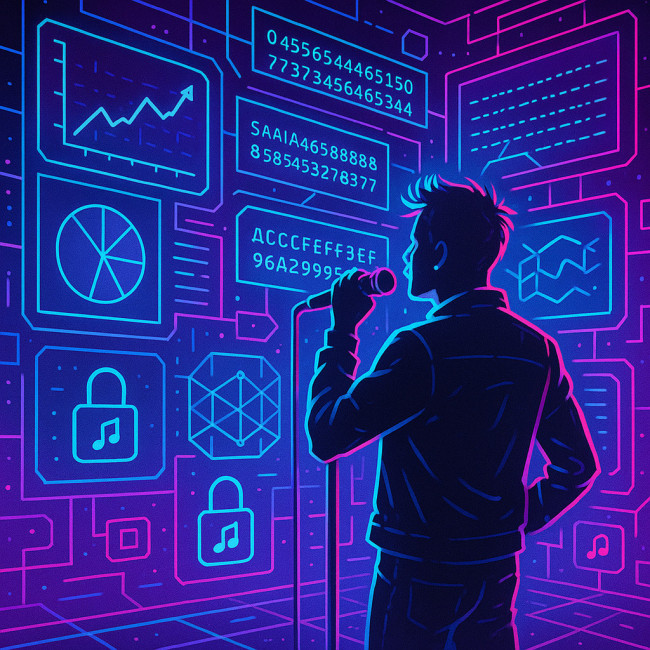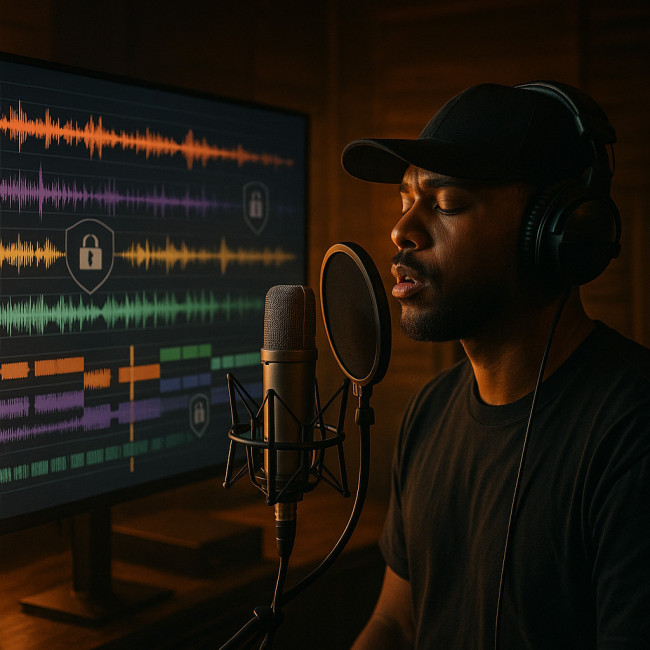AI beat marketplaces 2025: criteria to choose safe platforms for your vocals
AI-generated instrumentals are flooding music platforms, but not every marketplace protects vocalists against copyright claims, unfair splits or disappearing royalties. This guide shows you exactly how to vet AI beat marketplaces in 2025 so your voice, data and income stay safe.
Why the “safe platform” question matters more in 2025
Three trends converge this year:
- Explosion of AI composers. Algorithms can crank out 10 000 beats per minute. Marketplaces race to list them, sometimes skipping due diligence.
- Cascading copyright litigation. Labels sue over unlicensed datasets, and plaintiffs often name everyone in the value chain—including featured vocalists.
- New royalty audit rules. Stores must share granular usage data with rights-holders. Only well-built platforms can comply without delays.
Core risk factors when picking an AI beat marketplace

Before you scroll straight to pricing, pause and examine the structural safeguards that keep a platform from imploding the moment litigation or traffic spikes hit. A truly resilient AI beat marketplace behaves more like a fintech exchange than a hobbyist beat store: immutable ledgers log every split, audit trails document each model's training data, and zero-knowledge encryption walls off your raw vocals from hackers and over-curious staff. Run through each risk pillar—licensing provenance, revenue automation, stem custody, dispute cadence and certification depth—as if you were auditing a bank. If any pillar collapses, the knock-on effects can freeze royalties, trigger takedowns of your featured track on DSPs, or even rope you into class-action lawsuits you had no hand in starting. The twenty minutes you spend on this due-diligence cycle today will save weeks of legal back-and-forth and thousands in lost streams tomorrow.
1. Licensing transparency
Does the platform disclose exactly how source data for each AI model was cleared? Look for:
- Dataset summaries linked in the beat description
- Model version numbers and training dates
- Public list of opt-out creators
2. Revenue-split automation
Manual splits invite human error. Safe platforms run on smart-contracts that disburse shares automatically. Smart-contract hashes should be viewable on a public chain explorer.
3. Vocal stem isolation & storage
Uploading dry vocals? Check if stems sit on end-to-end encrypted storage. Platforms that outsource to generic cloud buckets are easy pickings for leaks.
4. Dispute-resolution speed
Benchmark: under 72 hours for first response, under 30 days to close. Anything slower risks takedowns of your finished track.
5. Compliance certificates
Look for ISO/IEC 27001, SOC 2 Type II and the new Music Data Transparency Seal launched in 2024.
Comparison table: popular AI beat marketplaces in Q2-2025
| Marketplace | Licensing transparency | Smart-contract splits | Encrypted stem vault | Average dispute time |
|---|---|---|---|---|
| BeatStars AI | Public dataset log | Yes (Polygon) | Yes | 18 days |
| Airbit Gen-2 | Partial | Planned Q4 | No | 34 days |
| Tracklib Labs | Full + provenance hash | Yes (Ethereum) | Yes | 11 days |
| Soundation Pro | None | No | No | 45 days |
| Artlist Sync-AI | Summary only | Yes (Algorand) | Yes | 27 days |
Step-by-step checklist to evaluate any new platform
- Download the contract template before you even create an account.
- Search prior DMCA filings using the Lumen database; flag platforms with recurring patterns.
- Test a $1 micro-sale. Withdraw earnings to confirm payment rail integrity.
- Raise a dummy ticket. Ask how to update a split. Time their response.
- Verify dataset provenance. Cross-check sample packs against public domain lists.
Integrate AI beats into your vocal workflow—safely

The moment you bring an AI beat into your DAW, the burden of security and attribution shifts from the marketplace to your own workstation. Structure your session so that every stem—lead, doubles, ad-libs, harmonies—is printed both with and without processing, timestamped, and checksum-hashed for later verification. Embed ISRC and performer credits directly into the Broadcast Wave chunk, then vault backups on an immutable cloud locker that supports versioning. This meticulous workflow may feel like overkill during creative flow, yet it's what lets you prove authorship, reconstruct mixes after accidental takedowns, and respond to Content ID mismatches in minutes instead of days. Ultimately, the safer your internal pipeline, the more leverage you possess when negotiating higher upfront fees or better royalty percentages on subsequent collaborations.
Once you pick a vetted marketplace, tighten your own process:
- Keep layered exports. As explained in this guide on layered vocal stems, separate tracks speed takedown counter-claims.
- Embed metadata. Follow the tips in Metadata mastery for hip-hop vocals to label ownership inside the WAV file.
- Monitor fan metrics. Dashboards such as those in fan data dashboards for singers help spot sudden drops caused by hidden claims.
- Audit demo quality. Use the audio specs checklist from Voice demos that keep agents listening so marketplaces can fingerprint your work accurately.
- Stay discoverable. Listing your finished track on the dedicated hip-hop singer directory boosts reach while retaining your rights.
Mini-quiz: are you marketplace-ready?
FAQ
- Can I use AI beats for commercial releases without extra clearance?
- Only if the marketplace provides a blanket license covering the model's training data and the final beat. Always keep a copy of that license.
- What happens if two singers buy the same AI beat?
- Most platforms grant non-exclusive rights. Opt for marketplaces offering an exclusive buy-out or permanent delisting once you purchase.
- How can I track my royalties in real time?
- Choose marketplaces that expose on-chain payout logs or offer API access so you can integrate data into your own dashboard.
- Is it safer to self-host AI beats?
- Self-hosting removes platform risk but shifts legal liability entirely onto you. Without robust compliance tools, it can be riskier.
- Do union contracts like SAG-AFTRA cover AI collaborations?
- Yes. The 2024 update added clauses for AI music work. Make sure your contract references Appendix X-“Synthetic Media”.
Key takeaways
- Demand dataset transparency and smart-contract disbursements.
- Never accept dispute windows longer than 30 days.
- Encrypt your stems and embed vocal metadata before upload.
- Cross-list finished tracks on trusted directories to diversify income.
Ready to secure your voice?
Choose a platform that passes every checkpoint above and start profiting from AI beats—without fearing takedowns or unpaid royalties. Need a second pair of ears on your contract? Reach out and we'll review the fine print together.











